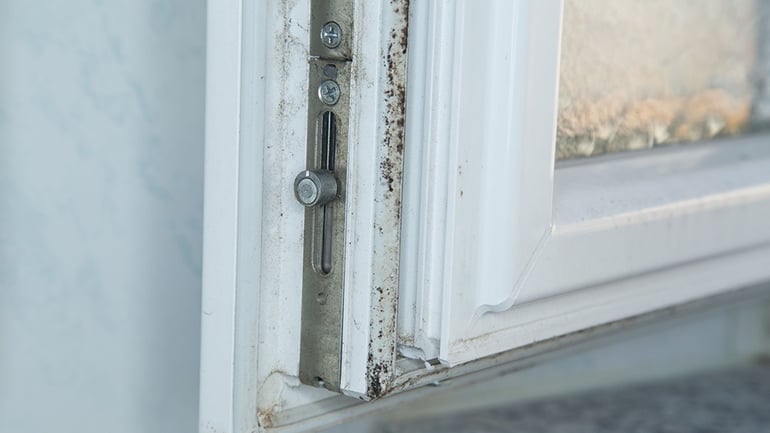How To Prevent Mold In Window Air Conditioner
How To Foreclose Window A/C Units From Molding
Mold appears every bit the result of a damp environment. If your window A/C unit has mold on it, that means you're at take a chance for health issues and a costly replacement. To fix this trouble, Warner Service is offering some expert prevention tips: Buy a unit with humidity command. Many window A/C units come up with a humidity control selection. This option allows the ac unit to control the level of humidity in the air, automatically discouraging the growth of mold. Use "auto" mode. When you leave for family vacation, don't turn your unit off. This leaves your home without airflow, causing moisture to build up without circulation and temperatures to rise without an active cooling system. Warm, moist, and stale air is the perfect environs for mold to grow. Instead, use the "motorcar" role on your air conditioning unit. This will continuously cycle the air in your dwelling house while you lot're away for a long period of time. Perform (or schedule) regular maintenance. HVAC maintenance is so important, specially during the shift in seasons. It allows your heating and cooling organization to prepare for the modify in weather earlier it's too late. Because window A/C units are dark and warm on the inside, information technology's a bang-up mold breeding footing. Preventing this requires basic HVAC maintenance, including checking information technology regularly and carefully cleaning any sign of water or formed mold. Get rid of dust. Dust helps mold grow on your unit of measurement. If yous need aid with dust prevention, check out Warner Service's 16 Ways To Clean Grit In Your Home , How To Become Rid Of Dust , and 15 Solutions To Controlling Dust In Your Dwelling house . How To Tell If Your Unit Has Mold How To Clean A/C Unit of measurement Mold Did you know that the offset air conditioner was made to dry out ink and continue newspaper directly in a printing press room? The HVAC component was designed to wick away wet, and in turn, forbid mold growth. To keep window A/C units clean, run it constantly and perform (or schedule) regular maintenance like dusting and immigration water. For more data about HVAC maintenance, download Warner Service's checklist today: 

A more thorough cleaning is also required but is best left to a professional technician . They'll behave a deep inspection similar to Warner Service's and teach y'all how to properly maintain and care for them .

How To Prevent Mold In Window Air Conditioner,
Source: https://www.warnerservice.com/how-to-prevent-window-a/c-units-from-molding
Posted by: monroewhithre1978.blogspot.com


0 Response to "How To Prevent Mold In Window Air Conditioner"
Post a Comment